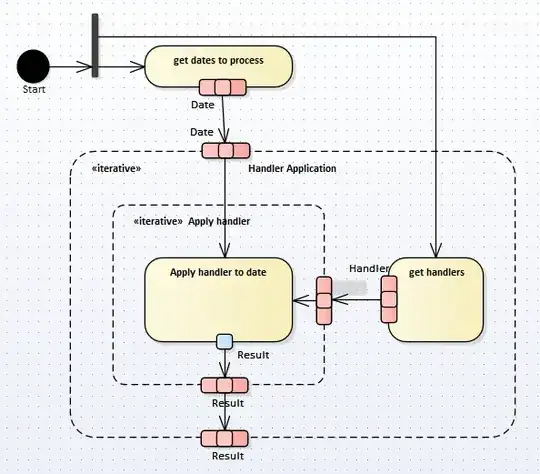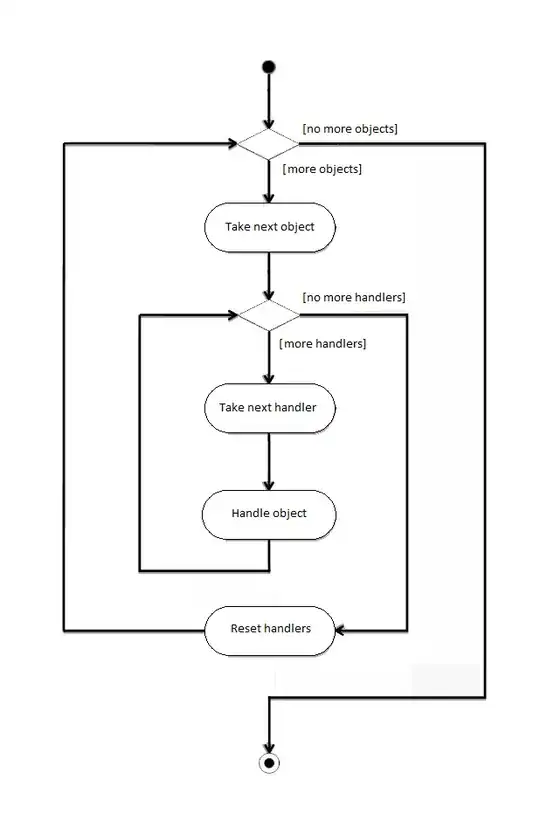EDIT: This question led to another, namely Representing handlers on UML diagram.
I'm trying to create an Activity Diagram that shows that a collection of objects is handled by a collection of handlers. Something along the lines:
Objects objs = { ... };
Handlers handlers = { ... };
for (o in objs) {
for (h in handlers) {
h.handle(o);
}
}
It is a real world problem, we have a list of dates and we want to call an unknown number of processes, in order, sequentially, and pass this date to each one. Is it something that can be easily shown on activity diagram?
When it comes to drawing I'm basically stuck in initial node, so there's not much to show in response to "show us what you have already".
Update:
After reading yesterday about expansion regions and objects and few other things, I came up with the following:

